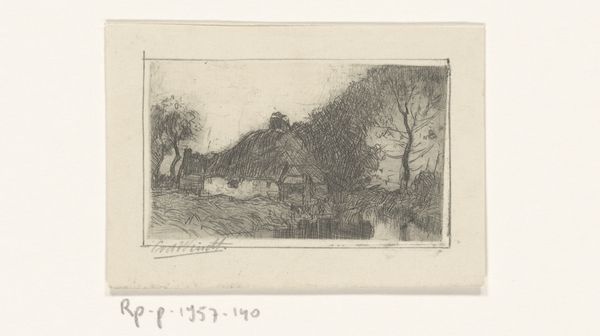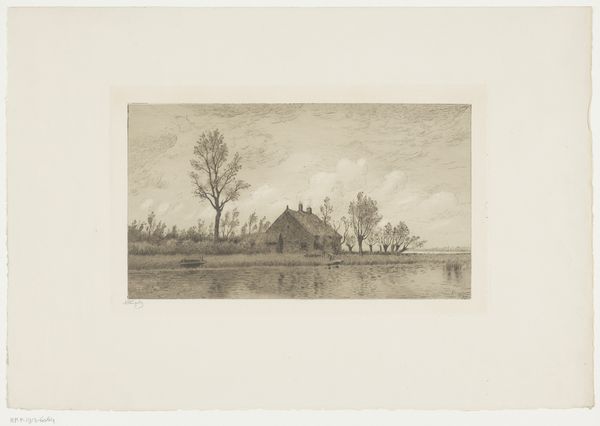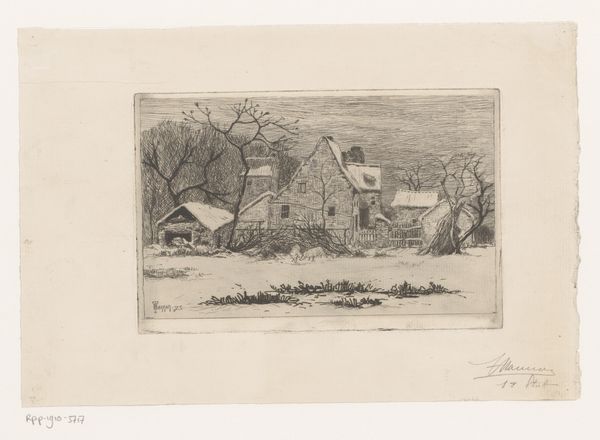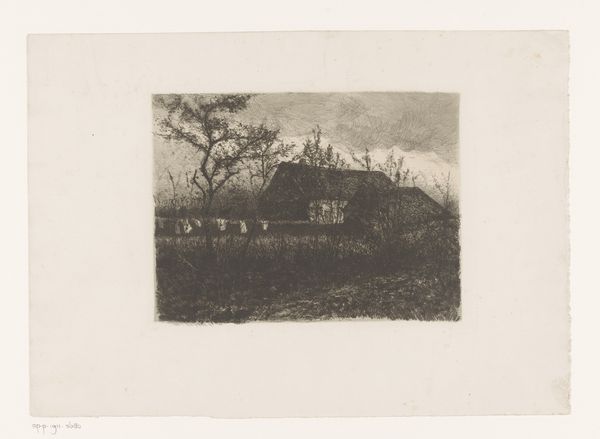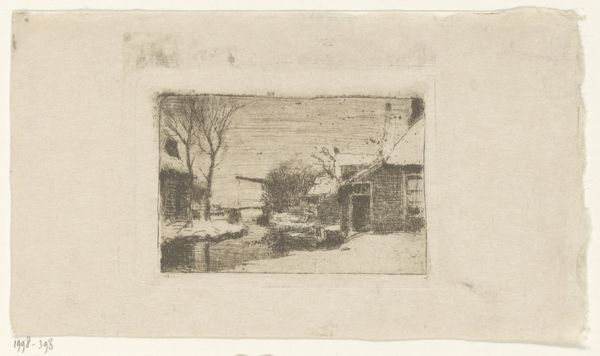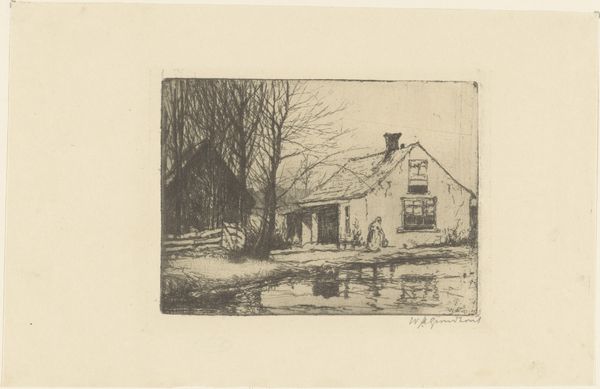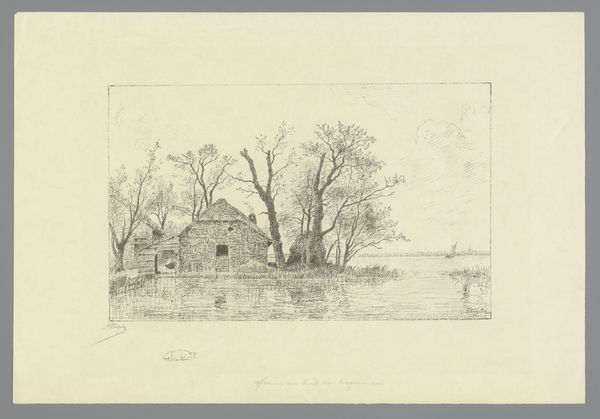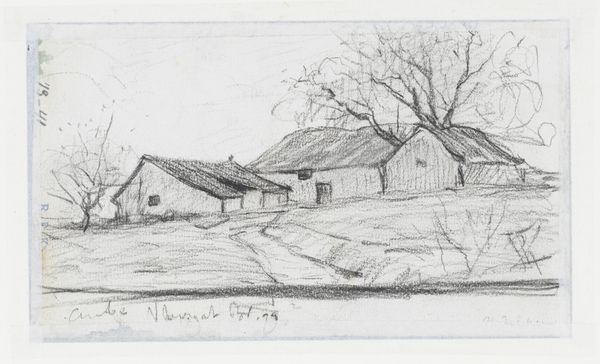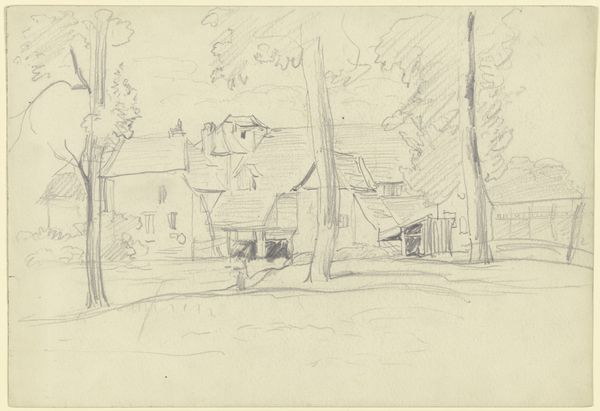
drawing, etching, paper, ink
#
drawing
#
etching
#
landscape
#
paper
#
ink
#
realism
Dimensions: height 70 mm, width 98 mm
Copyright: Rijks Museum: Open Domain
Editor: Here we have Philip Zilcken’s etching, "Boerderij aan een vaart," placing us somewhere between 1867 and 1890. It depicts a farmhouse nestled by a canal. It's the kind of image that whispers quiet rural life. How do you interpret this work through its historical context? Curator: Well, considering the period, realism was really solidifying as an artistic movement. Artists were turning away from idealized portrayals of landscapes and history, focusing on everyday scenes and ordinary people. This image, with its modest farmhouse, aligns with that shift. Where do you think Zilcken's choice to use etching contributes to the artwork's overall impact and reception? Editor: The etching creates this lovely textured quality, which mirrors the scene's rough, unvarnished feel. It lacks grandiosity, highlighting the simplicity of rural life. Is this a conscious artistic decision aimed to impact viewers in a specific way? Curator: Absolutely. Etching, as a more accessible medium than painting, aided in democratizing art. It was reproducible and distributed more widely, giving a larger audience the chance to observe and potentially relate to scenes from everyday life. The growth of art exhibitions during this period gave Zilcken more exposure and legitimacy to influence public perception about modern landscapes. This potentially validated the lives and work of those living outside major metropolitan areas. Editor: It’s fascinating how artistic choices tie into social shifts. Curator: Precisely! In making such quiet scenes, the image elevates their position. I wonder, thinking about today, how artworks depicting modern ordinary scenes get seen within particular frameworks of art? Editor: This really changes my perspective! I initially just saw a quaint landscape. Now, I recognize its value in representing and celebrating everyday life for a wider audience through socio-political influences. Curator: Indeed, thinking through art's public role enriches our understanding.
Comments
No comments
Be the first to comment and join the conversation on the ultimate creative platform.

